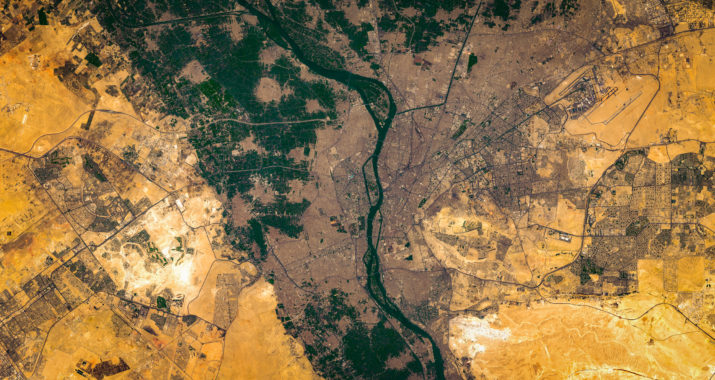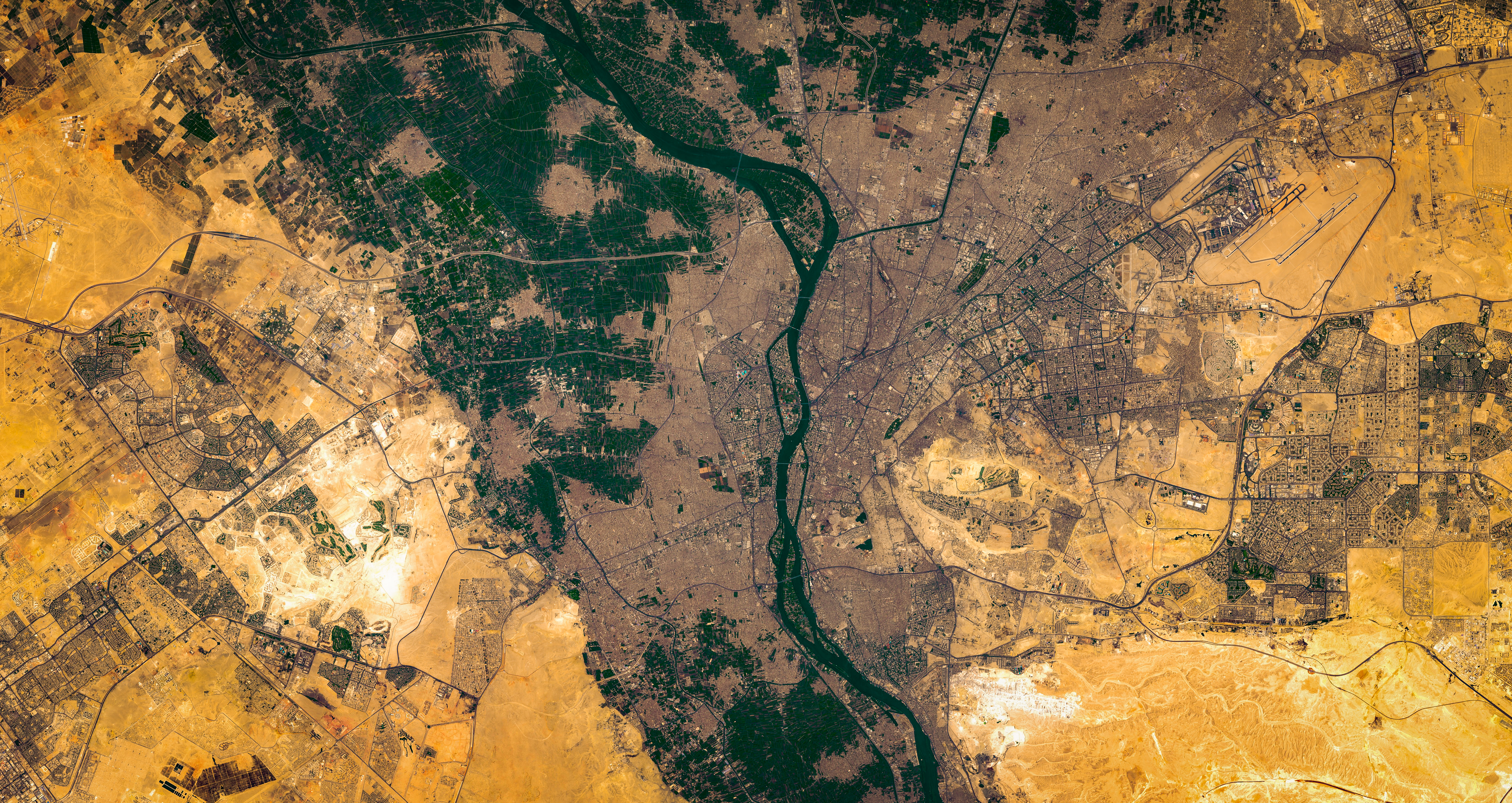

This is part of our special feature on Water in Europe and the World.
Two-thirds of our planet is covered by water, but only 2.5 percent of this water is fresh. Approximately 60 percent of the world’s fresh water supply is located in 276 transboundary rivers, such as the Nile, Rhine, Danube, Indus, Columbia, and Mekong basins. These transboundary rivers cover 45 percent of the earth’s land surface and provide a home for 40 percent of the world’s population (Wolf et al., 1999). About 90 percent of rivers and lakes in African are transboundary, while in the Middle East transboundary basins provide over 60 percent of the region’s domestic water supply (United Nations World Water Development Report, 2015).
It may be argued that there is sufficient fresh water in our planet to meet basic human needs throughout the world, however, this water is unevenly distributed. For instance, regions containing large populations, such as the Middle East, North Africa, western portions of the United States, and northern portions of China all confront extreme shortages of fresh water. Other states across the world, such as Pakistan, Afghanistan, and India experience what is referred to as economic water scarcity, which arises due to insufficient investment in hydrological infrastructure to enable states to capture water during the monsoon period for use during the remaining dry period. As a result, across the globe, 1.6 billion people live under conditions of physical water scarcity and by 2030, it is expected that half of the world’s population will be living under conditions of water stress (World Bank, 2016; United Nations, 2017). Economic water scarcity impacts 1.6 million people (FAO, 2007).
Several factors are combining to aggravate the fresh water crisis across the world. One of the most important factors is climate change. Various climate change models expect increases in intense floods and prolonged droughts, variability in precipitation, and shifts in precipitation patterns, which is expected to challenge the capacity of many states to meet their domestic water demand (IPCC, 2007). Climate change is also expected to influence the management of transboundary water resources, both in basins governed by treaties and in those lacking such contracts. Climatic variability is affecting the timing, quantity, and quality of water flowing in the basin, which can challenge a state’s capacity to comply with treaty commitments. There is also potential tension between treaties, which typically fix rights and responsibilities, and climate change, which seems to demand flexibility and resilience.
Along with climate change, there is also the impact of population growth, socio-economic development, and mismanagement of existing water supplies across the world that are expected to combine to challenge the ability of many states to meet their domestic water needs. In the twentieth century, the world’s population tripled and it is expected to reach 8 billion by 2025 (United Nations, 2014). Population growth, along with added migration from rural to urban areas, will increase pressure on infrastructure and states throughout the world to provide more water, food, electricity, and sanitation services.
In China, Saudi Arabia, India, and Brazil, along with other states across the world, people are experiencing socioeconomic developments that translate into increased consumption of water. As a result, there will be added pressure from the growing middle class throughout the world on water. The combination of increasing demand and decreasing supplies means that states will increasingly confront severe water shortages. For instance, China, Mexico, Jordan, Saudi Arabia, India, Pakistan, Afghanistan, and Yemen already confront acute water scarcity that is only expected to worsen.
The lack of safe and sufficient water can threaten human security, food security, national security, and regional stability. Access to safe and sufficient water is vital for maintaining human health, nutrition, welfare, poverty reduction, and consequently individual human security. The inability to meet domestic water demand can contribute to domestic tension and political instability, as people take to the street to protest against ineffective regimes. Across the world, the greatest consumer of water is the agricultural sector, which is essential for meeting food security. The increasing threats to the available supply of water across the world because of climate change can disrupt food security in both exporting and importing states. Water shortages and increasing dependence on transboundary resources to meet domestic water needs can also contribute to regional tension and instability as states increase their demand on shared resources.
Water Wars
Given the complexity of the water crisis across the world and the high dependence on transboundary sources, in the early 1990s, the popular press, world leaders, and international organizations warned of impending “Water Wars” (Bullock and Darwish, 1993). While some have argued that shared water resources can contribute to water wars, scholars have noted that there has never been an international war that has been fought over water resources (Wolf, 1998). In fact, through historical and empirical analysis scholars have debunked the water wars argument by showing the complete lack of empirical evidence for their existence (Wolf, 1997, 1998; Yoffe et al., 2003). Others noted the financial irrationality of fighting water wars (Brooks, 1997).
The absence of water wars, however, does not preclude other types of conflicts over transboundary rivers (Zeitoun and Warner, 2006). Studies have indicated a positive relationship between shared rivers and conflict that is defined as militarized interstate disputes (Furlong et al., 2006; Gleditsch et al., 2006). Others discovered high indicators of conflict over transboundary rivers, including acts causing deaths, small-scale military actions, and political/military hostile actions (Yoffe et al., 2003).
The potential threat of tension and conflict over transboundary waters arises because of the complex relations these hydrological systems impose on their riparian states, which can challenge states’ ability to meet domestic needs for water, food, and energy. Dependence on transboundary water resources can also challenge a state’s ability to respond to floods and droughts. A state’s failure to meet these domestic demands can contribute to regional tension and domestic insecurity (Zawahri, 2012). Thus, empirical analysis has revealed that transboundary rivers have been a source of regional tension and military conflict short of all-out war (Hensel et al., 2006; Mitchell and Zawahri, 2015).
Managing Transboundary Rivers
Transboundary rivers have not only been a source of conflict but also a source of cooperation across the globe, even among states with a history of animosity and conflict. Since 1960, India and Pakistan have cooperated in the management of their shared Indus River (Zawahri, 2009). Similarly, Jordan and Israel have cooperated over their shared transboundary rivers since the formal signing of their Peace Treaty in 1994 (Zawahri, 2008).
Through the creation of several databases to enable empirical examination of the factors contributing to conflict and cooperation over transboundary rivers, our understanding of the management of these transboundary resources increased tremendously (Zawahri, 2018). An analysis of several databases of treaties, protocols, and agreements covering transboundary water resources reveals several interesting trends regarding the governance of this scarce resource. In terms of issue areas covered in transboundary river accords, historically the trend was initially a large number of treaties covering hydroelectric and water quality issues (Hamner and Wolf, 1998). Recently, water quality issues and the environment have become the most common issue areas covered in treaties (Giordano et al., 2014).
As for the factors contributing to treaty formation, empirical analysis of existing accords reveals that they are more likely to be present in basins whose riparians are heavily dependent on the waters to meet their domestic needs and distribution of power between riparians seems to be an important factor but the literature tends to disagree whether it is power asymmetry or symmetry that contributes to treaty formation (Tir and Ackerman, 2009; Zawahri and Mitchell, 2011; Dinar et al., 2010; Tir and Stinnett, 2011; Hensel et al., 2006).
The literature appears conclusive that the design of treaties governing transboundary basins is important in facilitating cooperation between riparian states. Studies are in agreement that enforcement mechanisms are important treaty design features that facilitate cooperation between riparian states (Tir and Stinnett, 2012; Mitchell and Zawahri, 2015). Other studies have pointed to the impact of monitoring, conflict resolution mechanisms, information exchange, and river commissions as effective design features in assisting states to cooperate over their transboundary water resources (Dinar et al., 2015).
Thus, empirical examination of the interaction between riparian states over their shared water resources reveals that the presence of institutionalized mechanisms for addressing water disputes are essential for helping states to avert conflict. This research also reveals that conflict or disputes over transboundary water resources is most likely to occur in basins that are shared between states with a history of conflict, the states confront water quantity disputes, and there is a lack of institutionalized mechanism to manage disputes (Wolf et al., 2003; DeStefano et al., 2010).
Although the empirical research is conclusive about the important role of treaties and institutions in assisting to mitigate riparian disputes, only 113 of the world’s 276 transboundary basins are actually governed by institutional commitment (Giordano et al., 2014). Moreover, riparians appear to prefer to negotiate and sign sub-basin agreements, rather than the basin-wide accords recommended by scientists for the sustainable and efficient development of multilateral rivers (Hamner and Wolf, 1998; Giordano et al., 2014). Of the world’s transboundary rivers, 226 are bilateral (two states) basins, while the remaining are multilateral (three or more states) basins. When considering existing treaties, protocols, and agreements covering transboundary rivers, 86 percent of them are bilateral arrangements and only 13 percent of multilateral basins are governed by formal basin-wide commitments (Giordano et al., 2014). This reveals what appears to be a general preference among riparian states for fragmented governance of transboundary basins.
Conclusion
Empirical analysis reveals several trends about the prospects for cooperation and conflict over transboundary rivers. Conflict appears to be most likely over water quantity issues (such as heightened dependence on the transboundary river for meeting domestic water supplies, basins with insufficient water resources to meet riparian states’ needs, or the construction of hydrological infrastructure that threatens the water supply) and when there is a lack of institutionalized mechanisms to draw on once disputes arise. Another variable that appears to increase the potential for conflict is the nature of regional politics between riparian states. Several studies indicate a river flowing through democratic riparian states increases the potential for treaty formation, while a basin shared by adversaries increase the potential for conflict.
As for cooperation, the literature is in agreement that the presence of treaties or other institutionalized mechanisms is important for facilitating cooperation over transboundary rivers. But the effectiveness of institutionalized systems varies and is dependent on the design or capabilities that riparians invest in them. Of the many design mechanisms that riparians can include in their river treaties, studies tend to be in agreement that enforcement mechanisms are important for maintaining peace (Mitchell and Zawahri, 2015; Dinar et al., 2015; Tir and Stinnett, 2012). Additional research, however, is needed before we can draw definitive conclusions about the effectiveness of other design features.
Despite substantial advancements in our understanding of the management of transboundary rivers, several controversies remain. The following will focus on three controversies: whether the distribution of power within the basin negates or promotes cooperation; whether water shortages increase the prospect for conflict; and whether treaties are effective in assisting states to peacefully manage their transboundary rivers. The literature is generally uncertain about the influence of the distribution of power within the basin on the prospect for conflict and cooperation between riparian states. Single and comparative case studies focusing on the Nile, Euphrates, Jordan, and Mekong basins found power asymmetries to have a negative impact on cooperation and a positive impact on conflict (Waterbury, 2001; Lowi, 1995). Quantitative analysis combining several databases has produced conflicting results (see for example, Tir and Ackerman, 2009; Zawahri and Mitchell, 2011; Dinar et al., 2011).
Another uncertainty that the literature is still working to assess is the exact impact of water shortages on conflict and cooperation over transboundary rivers. For example, from 1948 until the 1994 Peace Treaty between Israel and Jordan, the Jordan basin was often used as an example of conflict over scarce water resources, while the Ganges basin with an abundant supply of water has also been used as an example of conflict (Lowi, 1995; Crow and Singh, 2000). As a result, we are uncertain whether an abundance or shortage of water is related to conflict and/or cooperation between riparian states.
The third uncertainty that remains within the literature is about the general influence of treaties on the peaceful management of transboundary water disputes. Quantitative research reveals that water disputes are likely to increase after riparian states sign treaties (Brochmann and Hensel 2009, 2011). This finding may be consistent with some arguments that treaties are either “paper tigers” or they do little to mitigate conflict. Yet, case studies of several basins, including the Indus, Jordan, La Plata, and Mekong reveal that treaties can be effective in facilitating cooperation even among adversaries (see for example Salman and Uprety, 2002; Zawahri, 2009).
Effective governance of transboundary rivers is vital for not only fostering cooperation and preventing conflict over water, but also providing the framework for ensuring states can meet their energy, food, and human security needs. While there has certainly been progress in our understanding of the management of transboundary rivers, much important work remains.
Neda Zawahri is an associate professor in the Political Science Department at Cleveland State University. She received her Ph.D. from the University of Virginia. Her research interest includes an examination of the management of transboundary river disputes, the role of international institutions in facilitating cooperation, environmental security, and the potential for conflict and cooperation between adversaries. Her articles and special issues appear in International Studies Quarterly, the Journal of Peace Research, Global Environmental Politics, International Environmental Agreements, International Negotiation, and Development and Change.
References:
Brochmann, Marit and Paul R Hensel (2009) Peaceful management of international river
claims. International Negotiation 14(2): 391-416.
Brochmann, Marit, and Paul R. Hensel. (2011) The effectiveness of negotiations over international river claims. International Studies Quarterly 55.3: 859-882.
Brooks, D. B. (1997). Between the great rivers: Water in the heart of the Middle East. International Journal of Water Resources Development, 13(3), 291-310.
Bullock, J. and A. Darwish. (1993). Water Wars: Coming conflicts in the Middle East. London: ST. Dedmundsbury Press.
Crow, Ben and Nirvikar Singh. (2000) Impediments and innovation in international rivers: the waters of South Asia. World Development 28(11): 1907-1925.
De Stefano, Lucia, Paris Edwards, Lynette De Silva, and Aaron Wolf. (2010). Tracking cooperation and conflict in international basins: historic and recent trends. Water Policy 12(6): 871-884.
Dinar, Ariel, Brian Blankespoor, Shlomi Dinar, and Pradeep Kurukulasuriya. (2010) Does precipitation and runoff variability affect treaty cooperation between states sharing international bilateral rivers? Ecological Economics 69(12): 2568-2581.
Dinar, Shlomi, David Katz, Lucia De Stefano, and Brian Blankespoor. (2015) Climate change, conflict, and cooperation: Global analysis of the effectiveness of international river treaties in addressing water variability. Political Geography 45: 55-66.
FAO. (2007). Coping with Water Scarcity. http://www.fao.org/3/a-aq444e.pdf
Furlong, Kathryn, Nils Petter Gleditsch, and Håvard Hegre. (2006). Geographic opportunity and neomalthusian willingness: Boundaries, shared rivers, and conflict. International Interactions 32.1: 79-108.
Giordano, Mark, Alena Drieschova, James Duncan, Yoshiko Sayama, Lucia De Stefano, and Aaron Wolf. (2014). A review of the evolution and state of transboundary freshwater treaties. International Environmental Agreements: Politics, Law and Economics 14(3): 245-264.
Gleditsch, Nils Petter, Kathryn Furlong, Håvard Hegre, Bethany Lacina, and Taylor Owen. (2006) Conflicts over shared rivers: Resource scarcity or fuzzy boundaries? Political Geography 25(4): 361-382.
Hamner, Jesse and Aaron Wolf. (1998). Patterns in international water resource treaties: The transboundary freshwater dispute database. Colorado Journal of International Environmental Law and Policy 1997 Yearbook.
Hensel, Paul; Sara McLaughlin Mitchell and Thomas E Sowers II. (2006). Conflict management of riparian disputes. Political Geography 25(4): 383-411.
International Panel on Climate Change (IPCC). (2007). Climate change 2007: Impacts, adaptation and vulnerability. NY: Cambridge University Press.
Lowi, Miriam R. (1995) Water and power: The politics of a scarce resource in the Jordan River basin. Cambridge MA: Cambridge University Press.
Mitchell, Sara and Zawahri, Neda. (2015). The effectiveness of treaty design in addressing water disputes, Journal of Peace Research, 52(2): 187-200.
Salman, Salman and Kishor Uprety. (2002). Conflict and cooperation on South Asia’s international rivers. World Bank, Washington D.C.
Tir, Jaroslav and Ackerman, John. (2009). Politics of formalized river cooperation. Journal of Peace Research 46(5): 623-640.
Tir, Jaroslav and Stinnett, Douglas. (2012) Weathering climate change. Journal of Peace Research 49(1): 211-225.
United Nations. (2014). World urbanization prospects. https://esa.un.org/unpd/wup/publications/files/wup2014-highlights.Pdf
United Nations. (2017). International decade for action ‘Water for Life’ 2005-2015. http://www.un.org/waterforlifedecade/scarcity.shtml
United Nations. World Water Development Report. (2015). Water for a sustainable world. United Nations Education, Scientific, and Cultural Organization, France http://unesdoc.unesco.org/images/0023/002318/231823E.pdf
Waterbury, John. (2002) The Nile Basin: National determinants of collective action. Yale University Press.
World Bank. (2016). High and dry: Climate change, water, and the economy. Washington, DC: World Bank.
Wolf, Aaron. (1997). International water conflict resolution: Lessons from comparative analysis. Water Resources Development 13: 333-365.
Wolf, Aaron. (1998). Conflict and cooperation along international waterways. Water Policy, 1, 251-265.
Wolf, Aaron; Jeffrey Natharius, Jeffrey Danielson, Brian Ward, and Jan Pender (1999) International river basins of the world. International Journal of Water Resources Development 15(4):387-427.
Wolf, A. T., Yoffe, S. B., & Giordano, M. (2003). International waters: identifying basins at risk. Water policy, 5(1), 29-60.
Yoffe, S., Wolf, A. T., & Giordano, M. (2003). Conflict and cooperation over international freshwater resources: indicators of basins at risk. JAWRA Journal of the American Water Resources Association, 39(5), 1109-1126.
Zawahri, Neda. (2008). Designing river commissions to implement treaties and manage international rivers, Water International, 33(4): 464-474.
Zawahri, Neda. (2009). Mediating international river disputes: Lessons from the Indus River, International Negotiation, 14: 281-310.
Zawahri, Neda. (2012). Popular protests and the governance of scarce freshwater in Jordan, Arab World Geographer 15(4): 265-299.
Zawahri, Neda. (2018). Managing transboundary rivers to avert conflict and facilitate cooperation. In Ken Conca and Erika Weinthal eds. The Oxford Handbook of Water Politics and Policy: Oxford University Press page 451-478.
Zawahri, Neda and Mitchell, Sara. (2011). Fragmented governance of international rivers, International Studies Quarterly 55(3):835-858.
Zeitoun, Mark and Jeroen Warner. (2006). Hydro-Hegemony: A framework for analysis of transboundary water conflicts. Water Policy, 8: 435-460.
Photo: High resolution satellite image of Cairo and nile river delta from above, Egypt, aerial view, natural background map, contains modified Copernicus Sentinel data [2018]
Published on December 11, 2018.




